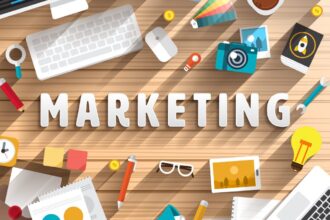In this fast-paced world, staying competitive means embracing tools that not only save time but also amplify your impact in Marketing.
That’s where marketing automation steps in – transforming tedious tasks into strategic power plays.
But marketing automation isn’t static. What was “cutting edge” last year is standard practice today. So, what’s truly new in marketing Automation Tools as we navigate 2025? Get ready to discover the exciting advancements that are reshaping campaign management, supercharging efficiency, and fundamentally changing how we connect with our customers. Let’s explore the future of marketing, right now!
Why Marketing Automation is No Longer Optional
Before we dive into the “new,” let’s quickly recap why marketing automation is now a fundamental pillar for any serious business:
- Time & Resource Savings: Automating repetitive tasks (like email sends, social media posts, lead nurturing sequences) frees up your team to focus on strategy and creativity.
- Enhanced Personalization at Scale: Deliver tailored messages to hundreds or thousands of customers simultaneously, making each interaction feel unique.
- Improved Lead Nurturing & Customer Journeys: Guide prospects seamlessly through the sales funnel and keep existing customers engaged long-term.
- Data-Driven Insights: Gain a deeper understanding of what works, allowing for continuous optimization.
The evolution of these tools is about making these benefits even more powerful and accessible.
The Evolution: From Basic Automation to Intelligent Orchestration
For years, marketing automation meant setting up simple “if this, then that” rules. Send an email if someone downloads a whitepaper. Remind a customer about an abandoned cart. While still valuable, the new in Marketing Automation Tools goes far beyond these basic triggers. We’re moving towards intelligent, adaptive systems that anticipate needs and optimize experiences in real-time.
What’s New in Marketing Automation Tools Right Now (2025 Trends):
Let’s explore the cutting-edge developments that are defining marketing automation in 2025:
1. Intelligent AI & Machine Learning at the Core
Artificial Intelligence (AI) isn’t just a buzzword; it’s the engine driving the next wave of automation.
- Predictive Analytics for Audience Segmentation: AI now analyzes vast amounts of data to predict customer behavior, buying intent, and churn risk. This allows tools to automatically segment your audience into highly precise groups, ensuring your messages hit the mark.
- AI-Powered Content Generation: From crafting compelling email subject lines and body copy to generating variations for ad creatives and social media posts, generative AI tools are assisting marketers in producing high-quality content at scale, saving immense time.
- Dynamic Personalization: AI enables real-time adaptation of content on websites, in emails, and within apps based on a user’s current behavior and preferences. Imagine a website dynamically changing its offers as you browse, based on your clicks and scroll depth.
- Conversational AI: Smarter chatbots and voice assistants integrated into automation platforms provide instant, personalized support, answer queries, and even guide customers through the sales funnel 24/7.
2. Tailored Hyper-Personalization & Dynamic Customer Journeys
We’re moving beyond simple name insertions in emails.
- One-to-One Experiences: The goal is to make every customer interaction feel unique, as if the entire campaign was crafted just for them. AI and advanced segmentation make this scalable.
- Cross-Channel Orchestration: Automation platforms now seamlessly stitch together customer journeys across email, SMS, social media, push notifications, and even offline interactions, ensuring a unified and contextually relevant experience regardless of the touchpoint.
- Lifecycle Automation: Tools are offering more sophisticated automation for every stage of the customer lifecycle – from personalized onboarding sequences to automated retention campaigns based on engagement levels, and even win-back strategies for lapsed customers.
3. Holistic Unified Customer View & CDP Integration
Breaking down data silos is critical for true personalization.
- Customer Data Platforms (CDPs) as the Central Brain: CDPs are becoming indispensable. They collect and unify customer data from all your different sources (CRM, website, app, POS, social media) into a single, comprehensive customer profile. This creates a “single source of truth.”
- Seamless Data Flow: With CDPs integrated, marketing automation tools can access this rich, real-time data to power hyper-personalized campaigns, trigger timely actions, and ensure consistency across every customer touchpoint. This is a significant leap from fragmented data.
4. Insightful Advanced Analytics & Attribution
Understanding your ROI is getting much smarter.
- Deeper Understanding of ROI: New analytics features provide granular insights into campaign performance across complex, multi-channel funnels.
- Multi-Touch Attribution Models: Automation tools are leveraging AI to help marketers understand the true impact of every touchpoint in a customer’s journey, not just the last click. This helps optimize budget allocation more effectively.
- Predictive Lead Scoring: AI analyzes lead behavior and historical data to predict which leads are most likely to convert, helping sales teams prioritize their efforts efficiently.
5. Accessible No-Code/Low-Code Automation & Integrations
Automation is becoming easier to implement for everyone.
- Easier Setup: Many platforms are enhancing their drag-and-drop interfaces and pre-built templates, making it simpler for marketers without coding knowledge to create complex automation workflows.
- Robust Integrations: The ecosystem of marketing tools is vast. New automation platforms offer seamless integrations with almost any other tool you use – CRMs (like HubSpot, Salesforce), e-commerce platforms (Shopify), social media management tools, and more – allowing for a truly connected marketing stack.
The Impact on Campaign Management & Efficiency
The implications of these advancements are profound for marketers:
- Faster Campaign Launch: AI-assisted content creation and easier workflow builders mean campaigns can go live in a fraction of the time.
- Reduced Manual Effort: Repetitive tasks are increasingly handled by intelligent automation, freeing up human marketers for high-level strategy and creativity.
- Improved Targeting & ROI: With hyper-personalization and advanced analytics, campaigns are more relevant, leading to higher engagement, better conversion rates, and a stronger return on investment.
- Superior Customer Experiences: Customers receive messages that are timely, relevant, and consistent across channels, leading to increased satisfaction and loyalty.
Choosing the Right Tools: Your Next Steps
As you explore what’s new in Marketing Automation Tools, consider:
- Your Business Needs: What are your core challenges? Lead nurturing, customer retention, scaling personalization?
- Integration Capabilities: How well does it play with your existing CRM, e-commerce platform, or other essential tools?
- Ease of Use: Can your team quickly learn and implement workflows, or will it require extensive training?
- AI & Advanced Features: Does it offer the intelligent capabilities you need for true transformation?
- Scalability & Cost: Can it grow with you, and does it fit your budget?






